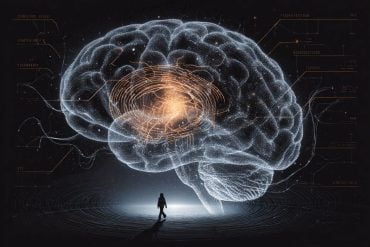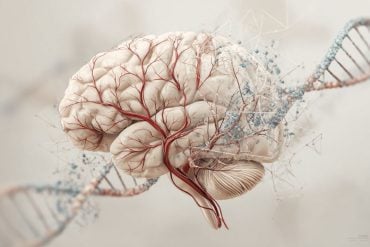Summary: Researchers crafted a detailed atlas of the amygdala, revealing new insights into emotional responses and potential treatments for cocaine addiction.
A cell-by-cell study of the amygdala, a brain structure vital in controlling emotional reactions, has exposed previously unobserved links between addiction behaviors and genes related to energy metabolism, suggesting energy management in neurons could influence addiction-like actions.
Through utilizing single-cell sequencing, the team discerned the genes active in individual amygdala cells from rats, offering a fresh perspective on the molecular biology behind cocaine addiction.
The findings, demonstrating the potential role of preexisting genetics in addiction and the efficacy of a drug targeting an enzyme involved in energy metabolism and neuron signaling in modifying behaviors, are pivotal in advancing personalized medicine for addictions.
Key Facts:
- Cell-by-Cell Atlas: The research utilized single-cell sequencing to generate a comprehensive molecular atlas of the rat amygdala, unveiling novel links between genes and addiction behaviors.
- Energy Metabolism: The discovered connection between energy metabolism in amygdala neurons and addiction-like behaviors opens new avenues in understanding the molecular biology of cocaine addiction.
- Drug Trial: The team tested a drug on rats that successfully reversed addiction behaviors by targeting an enzyme essential for energy metabolism and neuron communication, spotlighting a potential new treatment avenue.
Source: UCSD
Researchers at University of California San Diego School of Medicine and the Salk Institute for Biological Studies have created a unique, cell-by-cell atlas of the amygdala, a small structure deep within the brain that plays a crucial role in controlling emotional responses to drugs.
The findings, published October 5, 2023 in Nature Neuroscience, helped the researchers identify a potential new treatment for cocaine addiction, a disease that is poorly understood at the molecular level and has virtually no approved pharmacological treatments.
“There are some drugs that can help treat other addictions, such as those to opioids or nicotine, but there are currently no safe and effective drugs approved for cocaine addictions,” said co-senior author Francesca Telese, PhD, an associate professor in the Department of Psychiatry at UC San Diego School of Medicine.
“These findings help address that problem and could also point to universal molecular mechanisms of addiction that we haven’t understood until now.”
Cocaine is a widely used illicit drug and addiction to cocaine is a major public health concern, associated with a rising number of overdose deaths and a high rate of relapse. Despite the threat cocaine addiction poses, not every person who uses cocaine develops an addiction. According to the National Institute on Drug Abuse, an estimated 4.8 million people used cocaine in 2021, while only 1.4 million people had a cocaine use disorder.
“Some people use cocaine recreationally and never develop an addiction, while others are extremely susceptible to addiction after very little exposure to the drug or may relapse even after years of abstinence,” said Telese.
“Our long-term goal is to understand why there are these inter-individual differences in drug addiction behavior.”
The researchers studied brain samples from rats that had been allowed to self-administer cocaine for an extended period before being cut off from the drug for a period of abstinence.
These samples were obtained from the cocaine brain bank at UC San Diego, established by study co-authors Abraham A. Palmer, PhD, and Olivier George, PhD, both professors in the Department of Psychiatry at UC San Diego School of Medicine.
“The cocaine brain bank is an exceptional resource and was invaluable for this study because it allowed us to study a cohort of rats with a large amount of genetic variety, which mimics the diversity we see in human populations,” said Telese.
“Further, using a model of cocaine addiction where rats administered the drug to themselves let us look at the connection between our molecular discoveries and actual addiction behaviors.”
The team used single-cell sequencing to determine what genes were expressed in individual cells from the rats’ amygdala, a part of the brain that is central to processing emotions and is highly active in people with addictions.
“Being able to look at individual amygdala cells from rats with different vulnerabilities to addiction was an asset for our study because we wanted to understand how specific cell populations of the amygdala contribute to addiction development,” Telese added.
To make sense of the large amount of data generated through their sequencing experiments, Telese collaborated closely with bioinformatics expert and co-senior author Graham McVicker, PhD, an associate professor at the Salk Institute of Biological Studies and an assistant adjunct professor in the Department of Cellular & Molecular Medicine at UC San Diego School of Medicine.
Jess Zhou, a UC San Diego graduate student working with McVicker, developed the bioinformatics workflow needed to assemble their sequencing data into a molecular atlas of the rat amygdala.
The results revealed never-before-seen connections between addiction behaviors and genes involved in energy metabolism.
“This tells us that energy metabolism may be playing a key role in the activity of neurons in the amygdala and that this effect could be contributing to addiction-like behaviors,” said Telese. “This is a brand-new way of thinking about the molecular biology of cocaine addiction.”
In addition to identifying molecular factors that influence cocaine addiction behaviors, the researchers were able to test a drug in the rats that helped reverse these behaviors by targeting an enzyme involved in both energy metabolism and signaling between neurons.
“The fact that we were able to link our findings at the cellular level to behaviors exhibited in the rats and were even able to modify these behaviors with a drug puts us one step closer to understanding the extremely complex mechanisms in the brain driving addiction and relapse,” added Telese.
The researchers are now working on larger sample-size studies that can help determine how much of the effects they observed were based on preexisting genetics in the rats and how much were based on responses to extensive cocaine usage.
“This research suggests that preexisting genetics may play a much bigger role in addiction than we’ve previously understood,” said Telese.
“Unraveling these genetics will be key to improving personalized medicine for addictions. If we don’t understand the risk of relapse in individual people, we can’t fully understand the disease.”
Co-authors of the study include: Giordano de Guglielmo, Marsida Kallupi, Narayan Pokhrel, Apurva S. Chitre, Daniel Munro, Hai-Ri Li and Lieselot LG Carrette at UC San Diego, Aaron J. Ho at the Salk Institute for Biological Studies and Pejman Mohammadi at Scripps Research and University of Washington.
About this brain mapping and addiction research news
Author: Miles Martin
Source: UCSD
Contact: Miles Martin – UCSD
Image: The image is credited to Neuroscience News
Original Research: Open access.
“Single-nucleus genomics in outbred rats with divergent cocaine addiction-like behaviors reveals changes in gene amygdala GABAergic inhibition” by Telese et al. Nature Neuroscience
Abstract
Single-nucleus genomics in outbred rats with divergent cocaine addiction-like behaviors reveals changes in gene amygdala GABAergic inhibition
The amygdala processes positive and negative valence and contributes to addiction, but the cell-type-specific gene regulatory programs involved are unknown.
We generated an atlas of single-nucleus gene expression and chromatin accessibility in the amygdala of outbred rats with high and low cocaine addiction-like behaviors following prolonged abstinence.
Differentially expressed genes between the high and low groups were enriched for energy metabolism across cell types. Rats with high addiction index (AI) showed increased relapse-like behaviors and GABAergic transmission in the amygdala.
Both phenotypes were reversed by pharmacological inhibition of the glyoxalase 1 enzyme, which metabolizes methylglyoxal—a GABAA receptor agonist produced by glycolysis.
Differences in chromatin accessibility between high and low AI rats implicated pioneer transcription factors in the basic helix-loop-helix, FOX, SOX and activator protein 1 families. We observed opposite regulation of chromatin accessibility across many cell types.
Most notably, excitatory neurons had greater accessibility in high AI rats and inhibitory neurons had greater accessibility in low AI rats.







